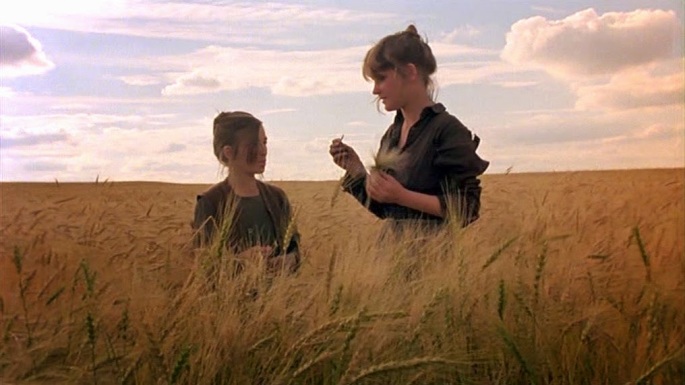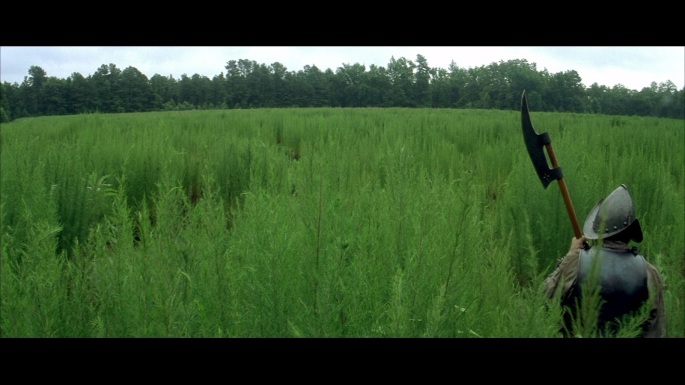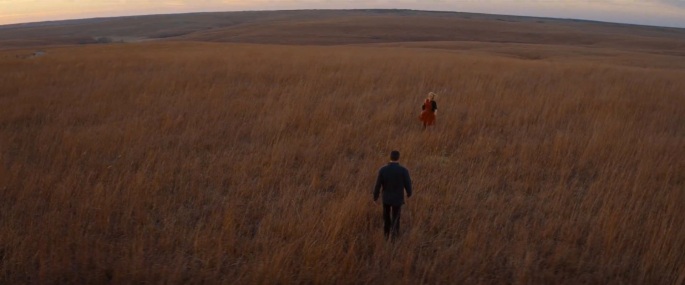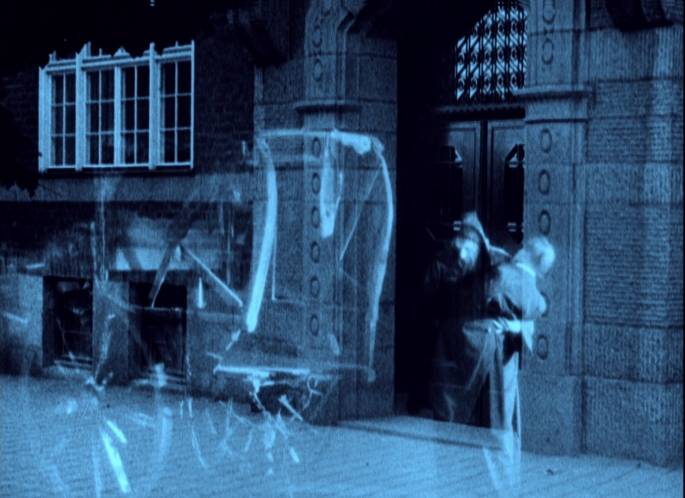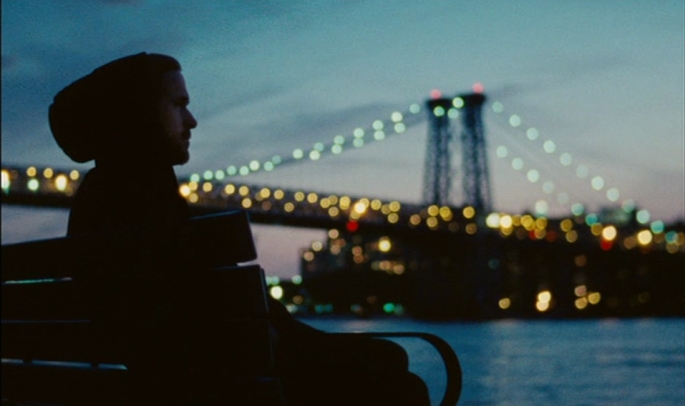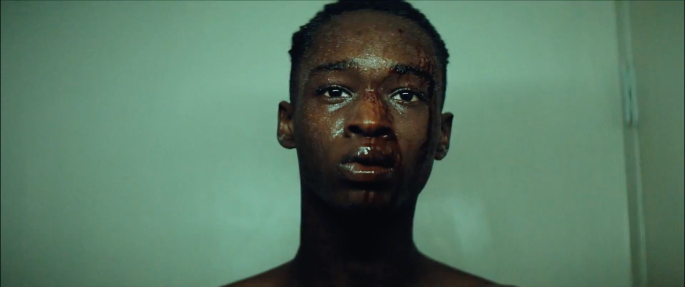In this blog I am going to take an overall look at my Final Major Project and assess what was good, what was bad, and what needs improvement.
This is my proposal, which clearly represents my goals at the beginning of this project:
I certainly think I achieved most of my aims, especially when it comes to research. I researched into everything I said I would, and I think it’s safe to say that I did it in detail. The exception here would be research into how thought process and dreams are portrayed in film. I didn’t get into that because I decided to use Terrence Malick’s style to portray dreams, so there was no real reason to research into other techniques.
I think I could improve on the actual execution of the film. I wrote that I wanted the film’s story and aesthetics to go hand-in-hand, and while I achieved that to a certain extent (some shots have symbolism and actually represent what or how the characters feel), most of the shots that I had planned didn’t make it into the film. I think that if I had held true to how I had originally planned the film out, it would have turned out much better than it did.
I also think the message of the film could have been clearer. While the message is conveyed (The message being that things are easier with less emotional investment, which, I admit, does sound very dire. If I could revise the proposal I probably would have changed it to ‘move on to better times,’ which is slightly more upbeat.), I believe that the fact that I decided to change the ending can be felt in the slight lack of closure, causing a little bit of a confusion as to what the message is.
Next year I want to improve by taking more time to get every shot exactly the way I want it. There is probably only one or two shots in this year’s film that I feel like I absolutely nailed. Of course, you should never be completely happy with what you have achieved, but I do think that with more of a perfectionist attitude I can make a much better film next year.
I have learned a lot during these 12 weeks and I think that the project turned out okay, but there have been a lot of chaotic moments during this production. I really learned that time is everything. We had 12 weeks, and for the first 4 I didn’t really do anything because everyone was doing research. I had already chosen my project before we even started working on it so I knew what I was doing, which made it very easy for me in pre-production. My research and planning were done fast but by the time we finished actually filming the film we only had a week left. I think I dealt with this well, however, because I started on the editing as soon as we had any footage whatsoever. This meant that while actors and crew members weren’t available for filming, I was still making progress, and I think if I hadn’t done that the project wouldn’t have been finished in time.
As far as ambition, I think my project was quite ambitious, but not overly ambitious. It is more ambitious than a music video, since you have many more elements to deal with (the main one being sound, which can be absolutely gruelling), but not as ambitious than, say, an animation (because of the sheer amount of skill you need to gain to pull something like that off).
My aims also weren’t particularly high, but they weren’t set low either. I set out to do a dramatic short film which needed to develop character, have an interesting story, I wanted to convey a message, and I wanted there to be symbolism in many of the creative choices I made. Then there is also the aim of using techniques that other filmmakers have used but trying to use them in a different way.
I also think I improved my skillset in the sense that I learned from my mistakes. Of course I improved my skillset by looking into things like colour grading the montage to make it look like it was shot on film, and learning about lenses to get the Terrence Malick look I wanted, but mostly I developed my skills based on what I did wrong. This is because next year I’m going to remember all of the things that I know would have made my film better this year, and I’m going to pay special attention to those things. For example, next year I am going to triple check my focus, plus ask all of the cast and crew to check the camera just to get it as precise as possible.
One of the reasons I think my project is fairly successful is because of research. I love doing research, and I think that really helped me with this project because I did a lot of it. This is true especially when it comes to cinematography. By researching films like ‘Raging Bull,’ ‘Moonlight,’ ‘Blue Valentine,’ ‘In the Mood for Love,’ and Terrence Malick’s entire filmography I really found a way to elevate certain moments, distinguish the real world from the dreamworld, show what characters are feeling through just a single image, etc. A specific example would be whenever I wanted to show that the characters are experiencing an important moment. I wanted to heighten the scene, really show the inner turmoil. I used several influences. ‘In the Mood for Love,’ for its brilliant slow motion, ‘Raging Bull,’ for its dolly zooms, and ‘Moonlight,’ for its 50 frames per second 1st person viewing experience which puts you in the character’s shoes.
Lastly, the greatest problem I faced with this Final Major Project has definitely been the fact that I thought that the ending was going to be horribly grainy and dark. At first I tried to just fix the footage as much as I could by colour grading it but it didn’t look much better. After that, while we were filming the dream sequence we just decided that if she takes her ring off I can edit it so that the ending just happens before it was meant to originally. This was probably the single best decision we made during the 12 weeks, considering the tremendous difference in the quality of the film.

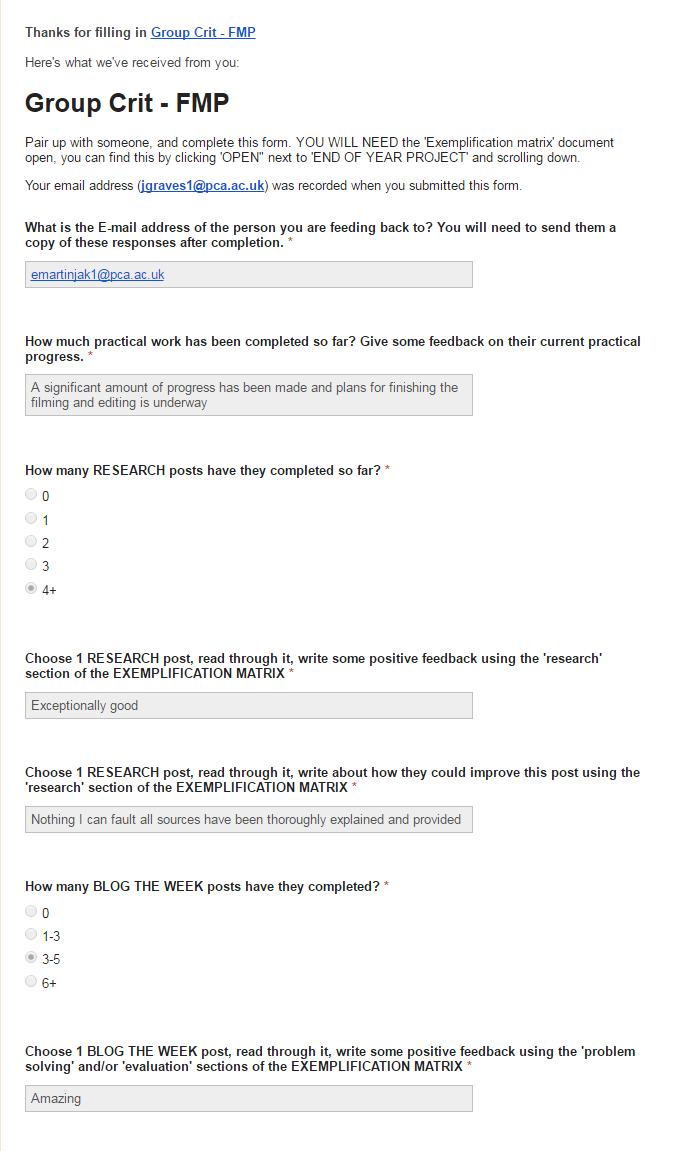
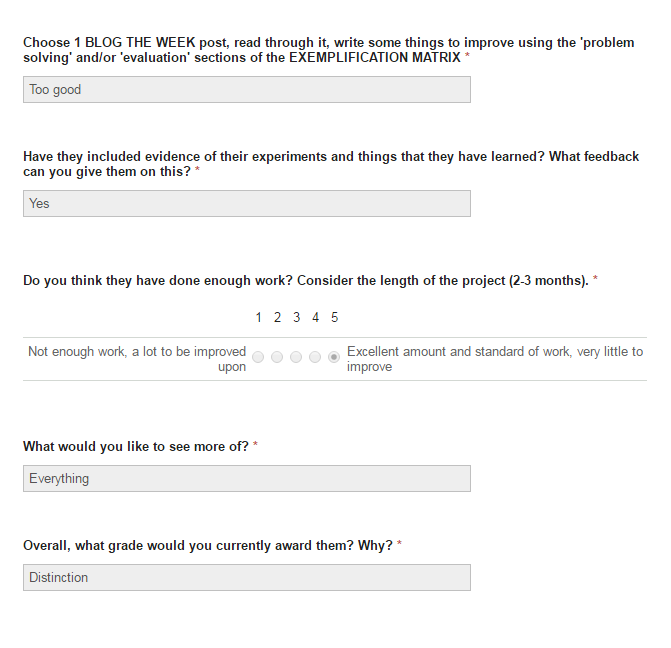
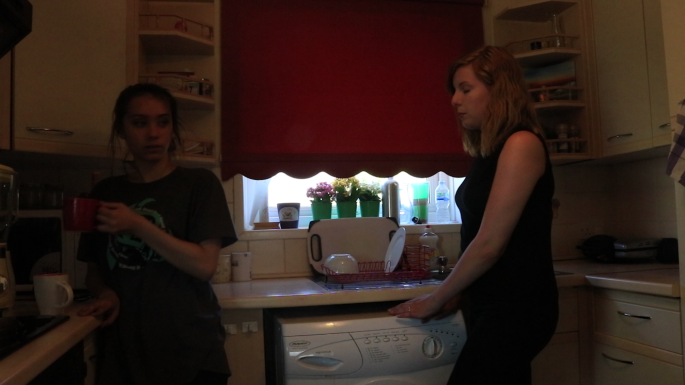

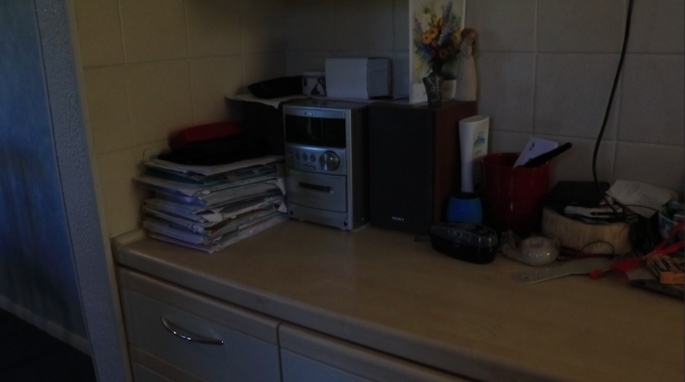
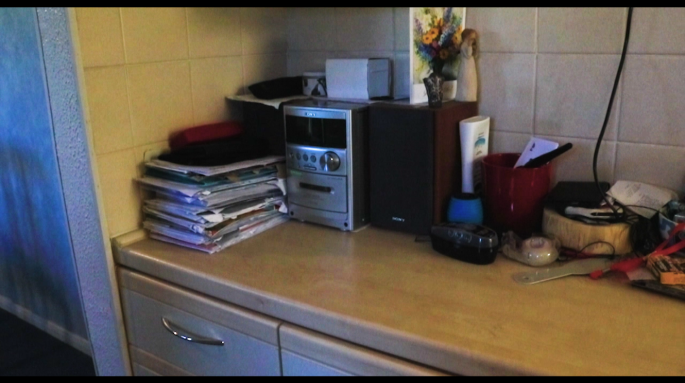
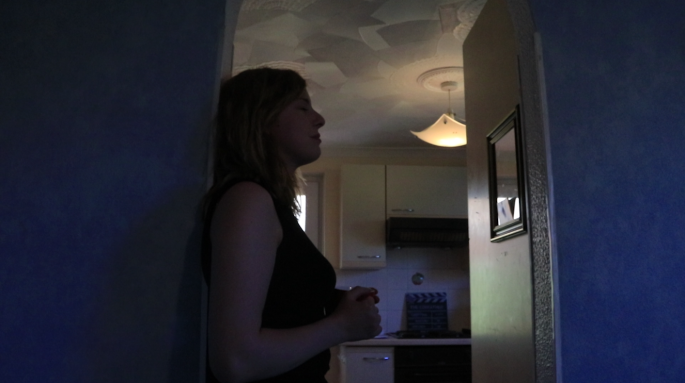

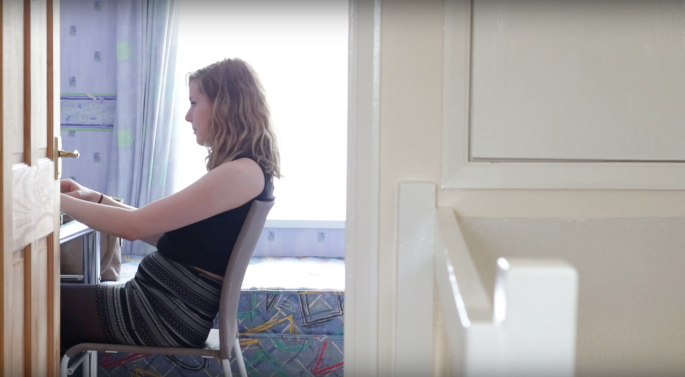



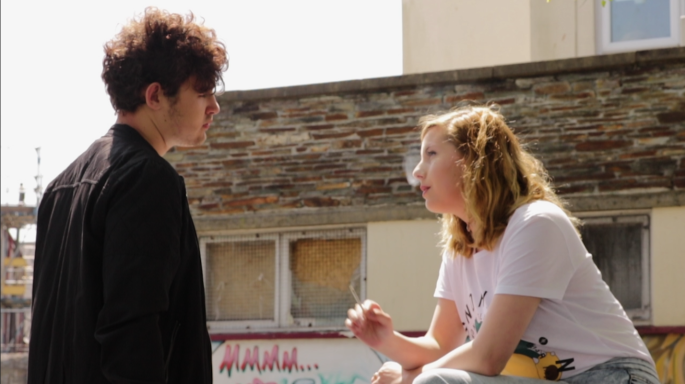
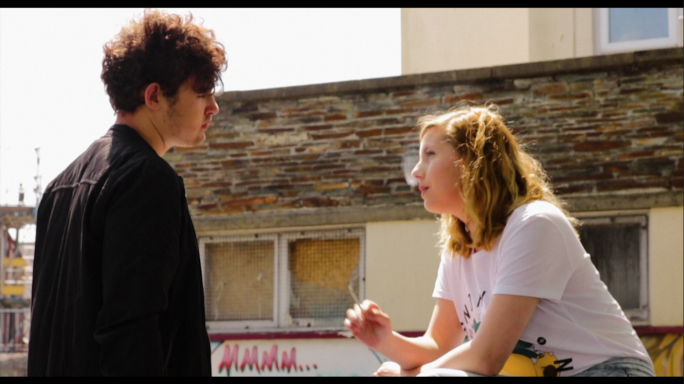

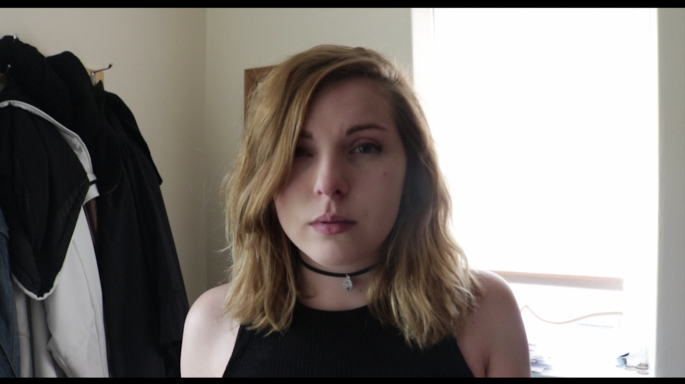
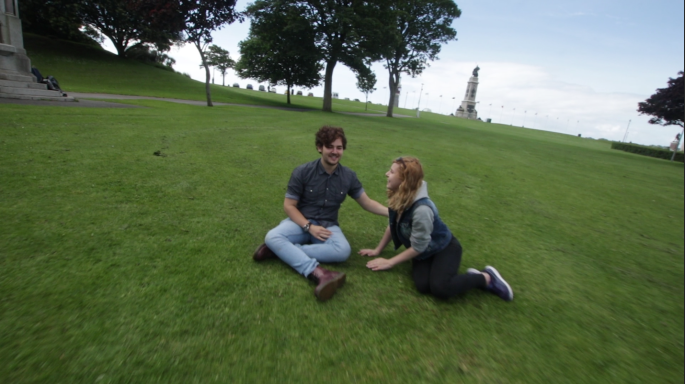
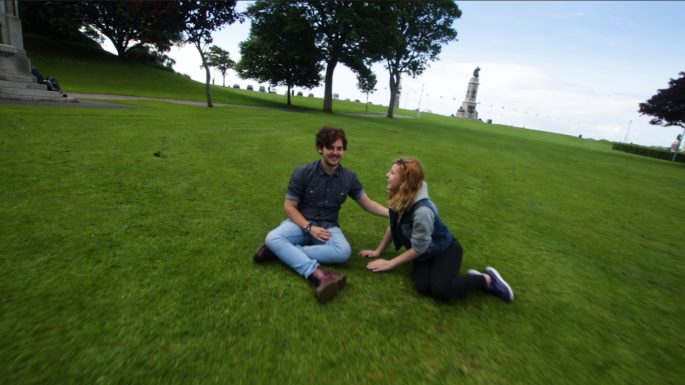
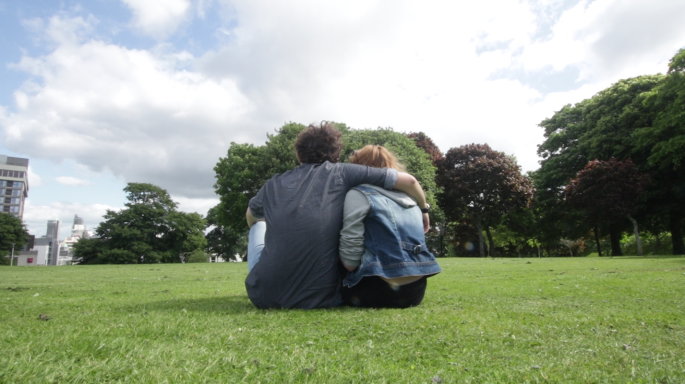
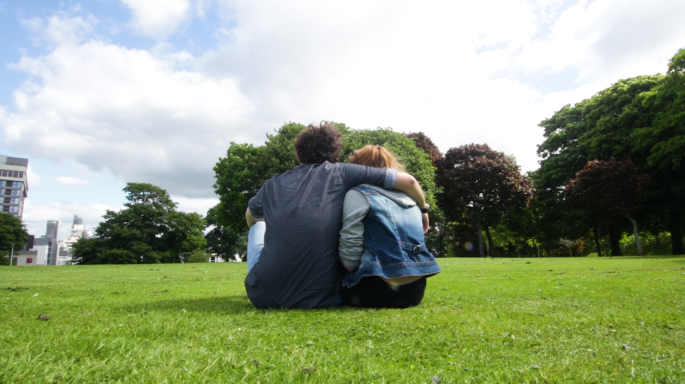
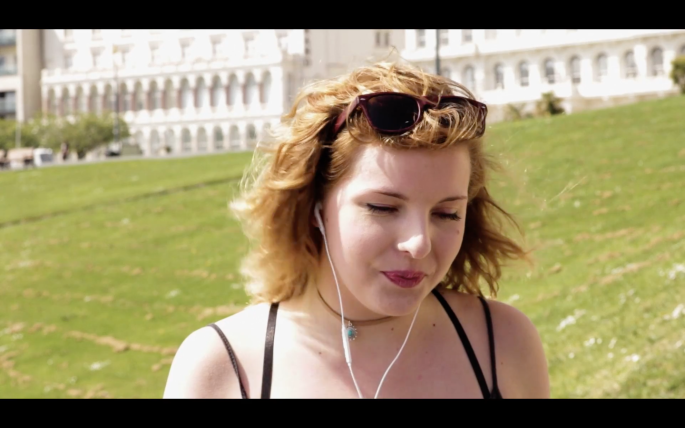
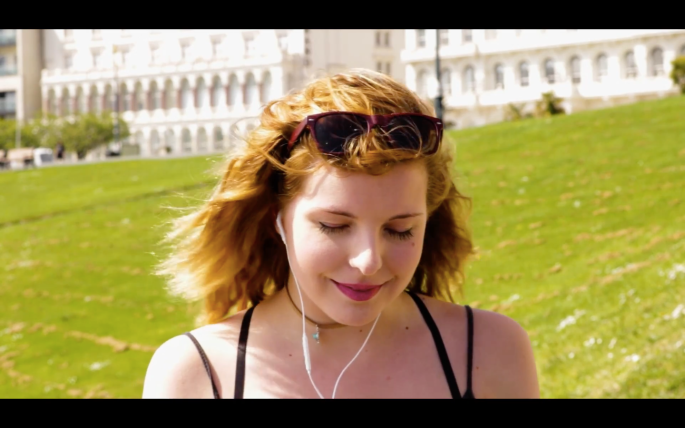 This shows that the character feels happier, it gives the scene an elevated feel, and I wanted that whenever the music is playing.
This shows that the character feels happier, it gives the scene an elevated feel, and I wanted that whenever the music is playing. I tried this shot about 20-30 times so that everyone was getting slightly pissed off at me. Whether it was my hands shaking, or the performance not being how I wanted it to be, or my finger in the frame, somehow this shot just didn’t go well. This ended up being the best take. I also added the sound effect of the fire which we hear more prominently in the next scene. The sound of the fire is kind of (like the music) a symbolic representation of Brad and their love, so I wanted to highlight it here as well.
I tried this shot about 20-30 times so that everyone was getting slightly pissed off at me. Whether it was my hands shaking, or the performance not being how I wanted it to be, or my finger in the frame, somehow this shot just didn’t go well. This ended up being the best take. I also added the sound effect of the fire which we hear more prominently in the next scene. The sound of the fire is kind of (like the music) a symbolic representation of Brad and their love, so I wanted to highlight it here as well.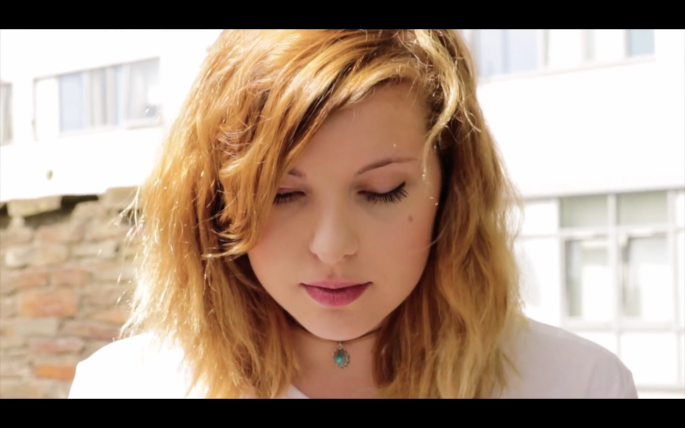
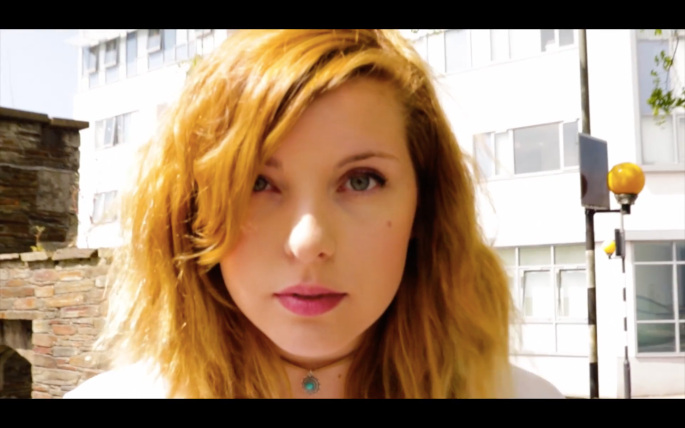
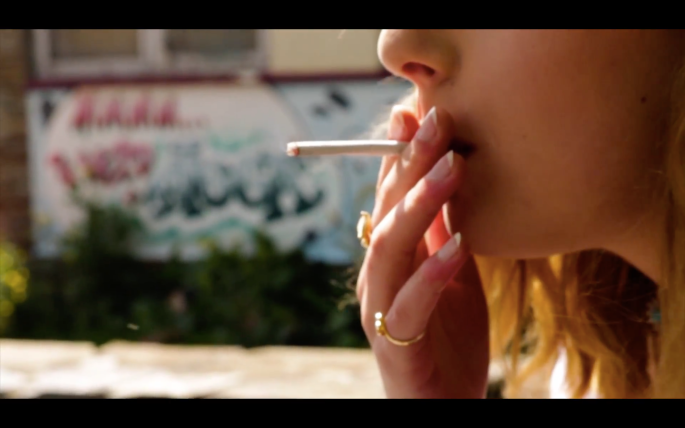

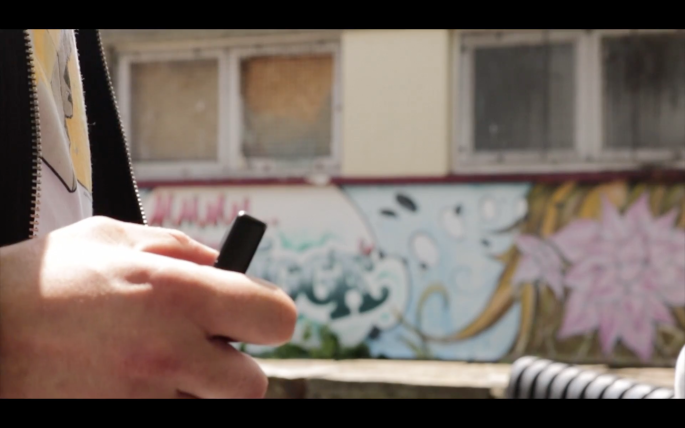
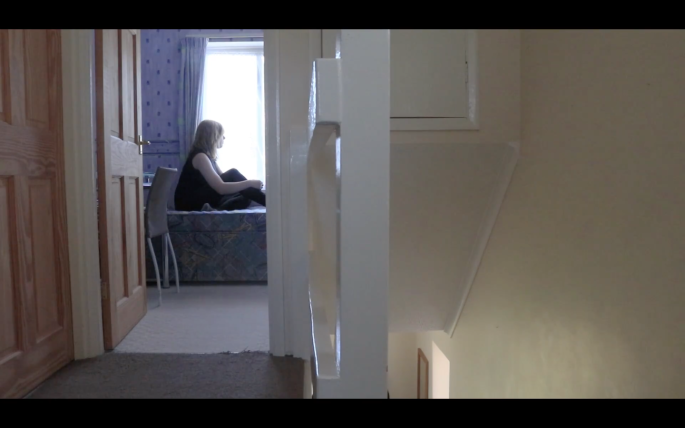
 I actually thought of this shot on the spot, and I immediately knew I’m going to like this shot a lot, and I was right. I like it because it traps the character on the edge of the screen, just like she feels trapped in an unhappy world.
I actually thought of this shot on the spot, and I immediately knew I’m going to like this shot a lot, and I was right. I like it because it traps the character on the edge of the screen, just like she feels trapped in an unhappy world.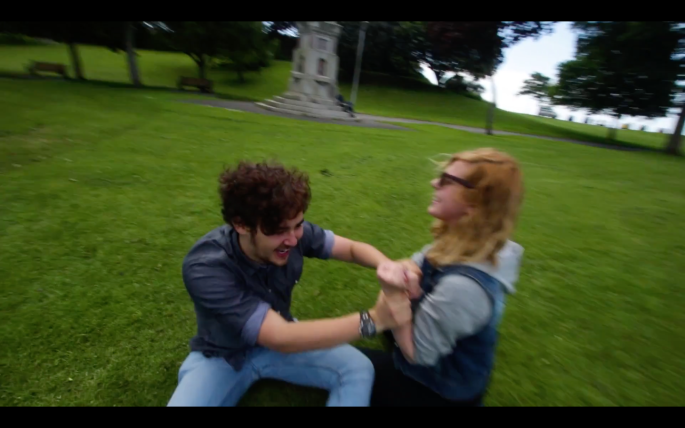
 I really love Terrence Malick, but I can definitely see why people don’t. His style isn’t for everyone, and it seems to be there just for the sake of his films being stylish. I tried to use this style in a way that makes sense, so I decided to apply it to the sequence in Louise’s head. I think this was a good idea because a lot of people compare his style to a kind of dreamworld so this was a perfect fit. Since the actors had never heard of Terrence Malick they probably had no idea what I was doing, since, mostly, I just walked around them with the camera and asked them to do whatever they wanted. We didn’t have time for actual voice over so I decided to record the dialogue in the same field, which resulted in some audio issues (a lot of background noise) which I mostly removed with Adobe Audition, but can still be heard.
I really love Terrence Malick, but I can definitely see why people don’t. His style isn’t for everyone, and it seems to be there just for the sake of his films being stylish. I tried to use this style in a way that makes sense, so I decided to apply it to the sequence in Louise’s head. I think this was a good idea because a lot of people compare his style to a kind of dreamworld so this was a perfect fit. Since the actors had never heard of Terrence Malick they probably had no idea what I was doing, since, mostly, I just walked around them with the camera and asked them to do whatever they wanted. We didn’t have time for actual voice over so I decided to record the dialogue in the same field, which resulted in some audio issues (a lot of background noise) which I mostly removed with Adobe Audition, but can still be heard.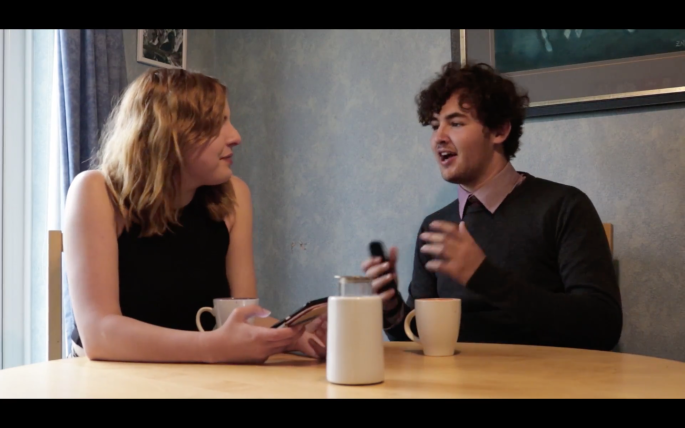
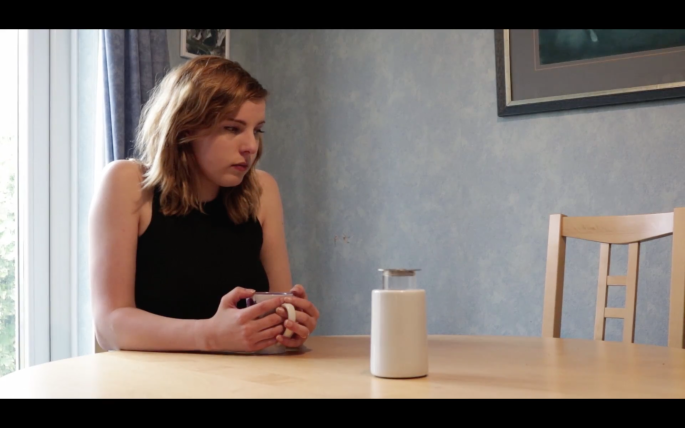
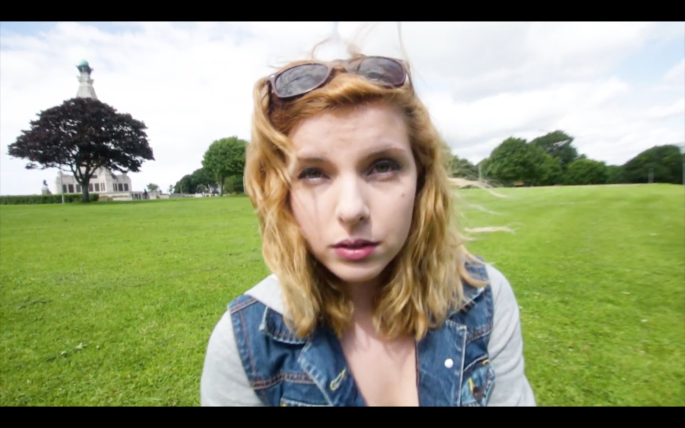
 For the first time, this results in the exact opposite effect, just like, also for the first time, Louise is able to get over Brad and realises that their life probably wouldn’t have been perfect.
For the first time, this results in the exact opposite effect, just like, also for the first time, Louise is able to get over Brad and realises that their life probably wouldn’t have been perfect. She sees that it was her who was thinking about their life together being imperfect, and not Brad.
She sees that it was her who was thinking about their life together being imperfect, and not Brad. It is Louise opening the door. Many great films end on a door being closed.
It is Louise opening the door. Many great films end on a door being closed.